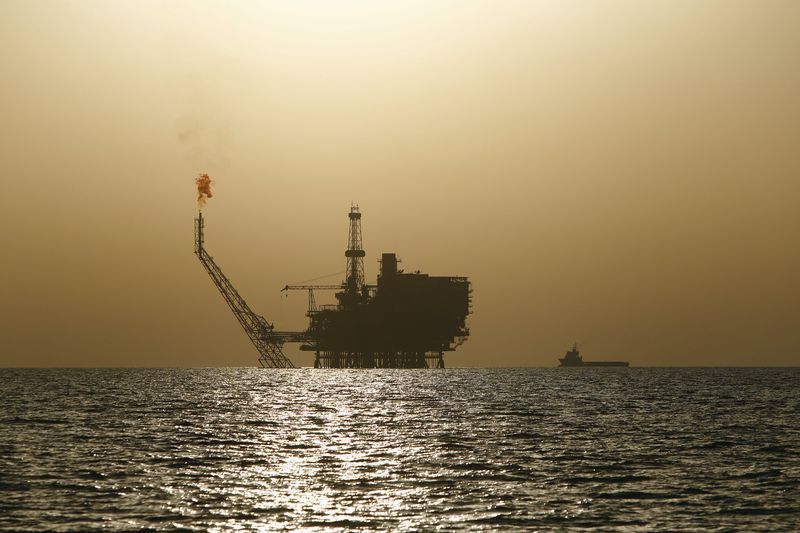

© Reuters. FILE PHOTO: An aerial view shows the oil tanker Vladimir Arsenyev at the Kozmino crude oil terminal on the coast of Nakhodka Bay, near the port city of Nakhodka, Russia, August 12, 2022. REUTERS/Tatiana Meel
By Emily Chow
SINGAPORE (Reuters) – Oil prices rose on Monday amid optimism about recovering demand from China, concerns that a lack of investment will hurt future oil supplies and major producers maintaining production limits.
It was up 47 cents, or 0.6%, at $83.47 a barrel by 0445 GMT. US West Texas Intermediate (WTI) crude for March, due Tuesday, was at $76.78 a barrel, up 44 cents, or 0.6%. The most active April contract rose 0.5% to $76.90.
Benchmarks closed down $2 a barrel on Friday and closed about 4% lower last week after the United States reported higher inventories of crude oil and gasoline.
“Brent and WTI prices rose slightly this morning after selling off on recent hawkish comments from the Fed, following stronger than expected US CPI and PPI data releases,” he said. Baden Moore, head of commodity research at National Australia Bank (OTC:).
While last week’s announcement that the US will sell 26 million barrels of its Strategic Petroleum Reserves adds some downward pressure to the market, global supply appears to be “flat” compared to the previous corresponding period. after factoring in production cuts from Russia and OPEC+. Moore added.
He was referring to the agreement by the Organization of the Petroleum Exporting Countries (OPEC) and allies, a group known as OPEC+, last October to cut oil production targets by 2 million barrels per day (bpd) until the end of 2023.
Russia plans to cut oil production by 500,000 bpd, or about 5% of production, in March after the West imposed price caps on Russian oil and oil products.
“In that context, we continue to see a reopening of China and a rebound in China and global demand for aircraft to drive upside price risk,” Moore said. China is the world’s largest importer of crude oil.
Analysts expect China’s oil imports to reach an all-time high in 2023 due to increased demand for transportation fuel and new refineries coming online.
China, along with India, have become the main buyers of Russian crude after the European Union embargo.
At the same time, future oil supply shortages are likely to push prices to $100 a barrel by the end of the year, Goldman Sachs (NYSE:) analysts said in a February 19 note.
Prices will rise “as the market returns to deficit with underinvestment, shale restrictions and OPEC discipline ensuring supply does not meet demand,” they wrote.

